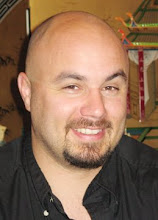
I am usually an even-tempered person, fairly easy to live with and get along with, but lately, in the past week, I've been irritable, easily frustrated, and snappish. I don't know why, and I've been thinking about that.
I'm not sick, though I haven't felt really well for awhile. It's hard to feel pleasant when you feel worn out or just kind of punk, but that's no excuse for carping at Peter or snapping at him.
I have also been sadder about Leif than I was for awhile. It seems to have come back in one of its rolling tides. I wonder if the two are connected, whether something is causing both, and if so, what? Is there some kind of internal "switch" that got activated? I don't want to be "cantankerous" (a word Peter likes to use) and don't intend to be, but then I lash out like I did today when once again he was talking to me from two rooms away and couldn't hear my answer no matter how loud I shouted, or I couldn't see what he wanted to show me on his laptop because he was "barricaded" in his end of the reclining couch. It's frustration but WHY am I not just taking it in stride?
The only answer I can come up with is the depression that seems to come and go ever since Leif died. It's hard to motivate myself to do the things I need to do, or even care about them. Some days are good, and I can "attack" my list of to-dos and accomplish something. Other days I force myself to plod through doing this and that and wasting time (something very unlike me) while my list of things needing to be done gets longer and longer.
I hope I get over this bout soon. There have been several since Leif died, and each time I come out of one I hope they are in the past and I won't be in a funk again, but it fools me. It sneaks up on me.
The last one, when both Peter and I were in that funk, was in April and May, starting when we were facing the first anniversary of Leif's death, and Mother's Day, my birthday and Father's Day without him (though we were so fortunate to have Madeleine and Aly here for Father's Day and that made it special!), and getting ready to meet Peter Anthony in Orlando when he was there for a conference. We should have been really happy at getting to see him (and we were when we saw him! and hated to say goodbye!) but the anticipation was very strange. It seemed that sadness gripped us both, and I finally figured out that the reason was that getting to see Peter A. reminded us that we would never get to see Leif again. It's so grossly unfair to have that kind of sadness coloring a visit with a beloved living son, and luckily, it was dissipated and forgotten the moment we saw Peter.
I think something like that might be operating now. We are looking forward to seeing Peter again, very much looking forward to it, but it also means facing that we will not be seeing Leif. We were in Tampa on Monday and coming home Peter W. remarked again that it just doesn't seem right that Leif is no longer living there in his apartment, that we can no longer stop by to see him. He said that and I started to cry. I'm crying far too often.
I look at these photos of my beautiful little boy and wonder how it could have gone so wrong.
Now I have to figure out how to lift myself out of this funk and get back to my ambitious, even-tempered self, how to live the life I have, which is a good one, without pining away for what I cannot have. It's not easy to shake depression. I just want it to go away and be temporary, not something that settles into my life and drags it down. That's not fair to Peter, to Peter W., to my grandchildren, to my family.
One of the difficulties of depression is that you don't feel like doing any of the things that will actually help. Work is the best therapy. Getting something done always helps. I just have to figure out how to make myself do more of it.
---------------------------------
These are two more photos taken in May 1979 at the Hanau Bird Sanctuary in Hanau, Germany when Leif was three years old.




































